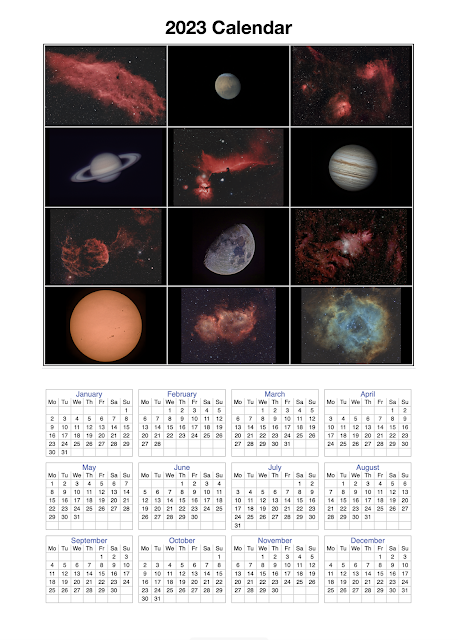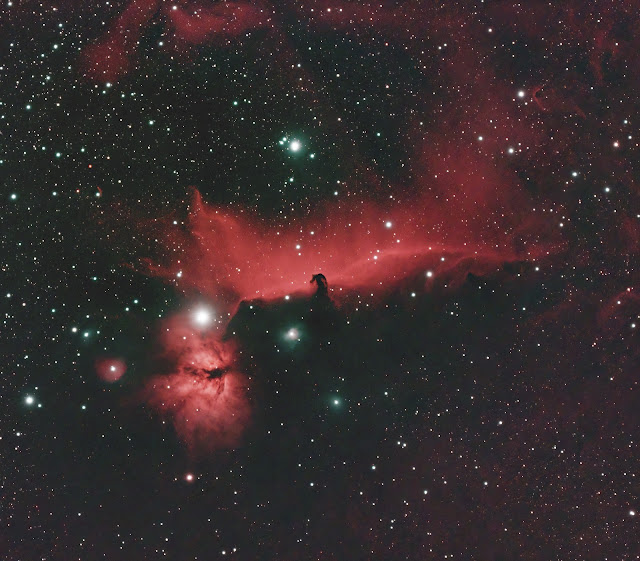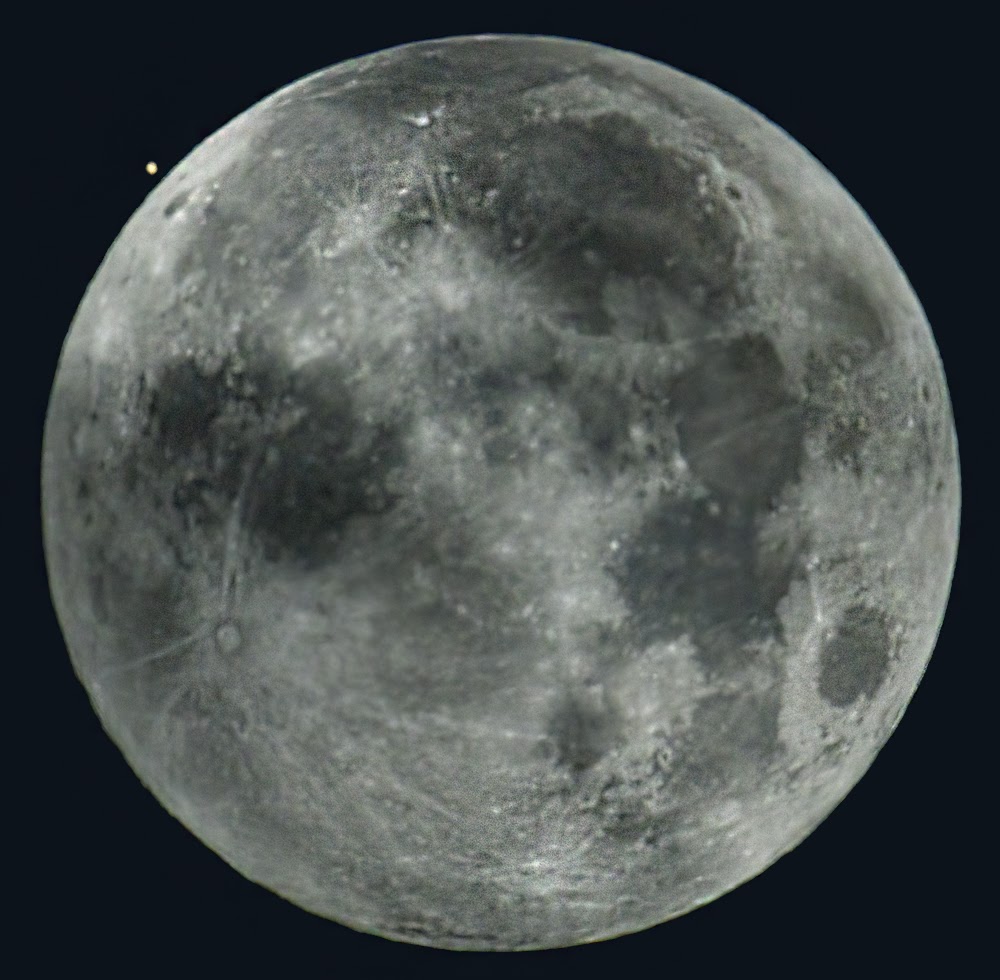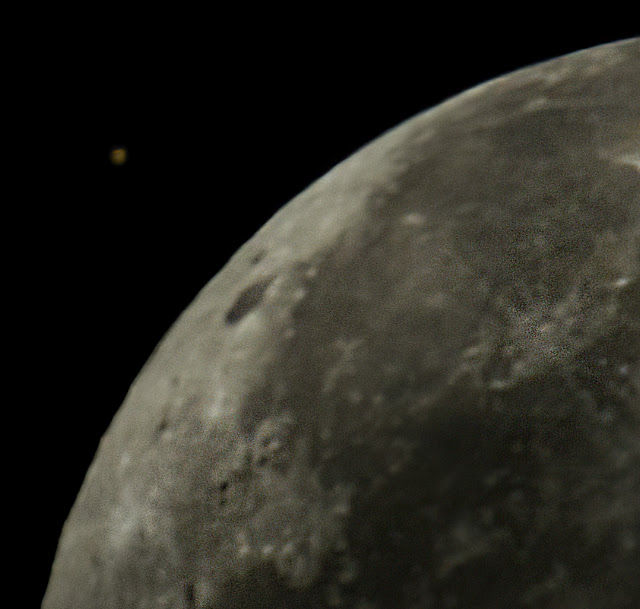Occultation is where one astronomical object, such as a planet or moon, passes front of another one, obscuring it from being seen. In this case, the Moon was due to pass in front of Mars in the early hours of 8 December 2022. In addition, Mars also happened to be in opposition, meaning that the Earth was directly in line between Mars and the Sun. Opposition is when a planet appears at its brightest in the night sky.
I had so looked forward to this rare astronomical event and planned for it quite throughly, but in the end I was frustrated and foiled by the cloudy weather. I set up early in the afternoon and had quite a few practice shots during the early evening when the skies here were crystal clear.
At first I thought I'd stay up all night waiting for the main event when Mars was occulted by the full 'Cold' Moon at around 4:45am, but in the end I decided to get a few hours sleep starting around11:45pm. When I got up at 3:14am, the skies were still clear and Mars was a lot nearer to the moon than when I had gone to bed. However, when I returned from making a quick cup of tea, everything had changed!
The clouds had rolled in totally obscuring Mars and the Moon at times and time was running out. I'd focused everything previously, so I wasn't concerned about that, but the exposure time was giving me real problems and I had to keep adjusting it manually with every passing cloud. This really wasn't easy and was certainly very frustrating.
Consequently, I couldn't see Mars at the all important moment of occultation, so I just left the camera video running whilst I hoped for the best. I was also trying to take some manual single shots with my DSLR and big lens in a sort of belt and braces approach. In hindsight this wasn't such a good idea as my attention was constantly switching between the two systems.
At first I thought I'd totally fluffed it, but with a considerable amount of processing I managed to resurrect these two shots from the stacked video. They're quite disappointing really but they are all I've got and at least I witness the event.
My best shot probably came after the occultation had finished and Mars was on its way to set in the western sky. You can see how cloudy it was from the colours in the sky and the lack of clarity in the
Cold Moon's surface features.




























